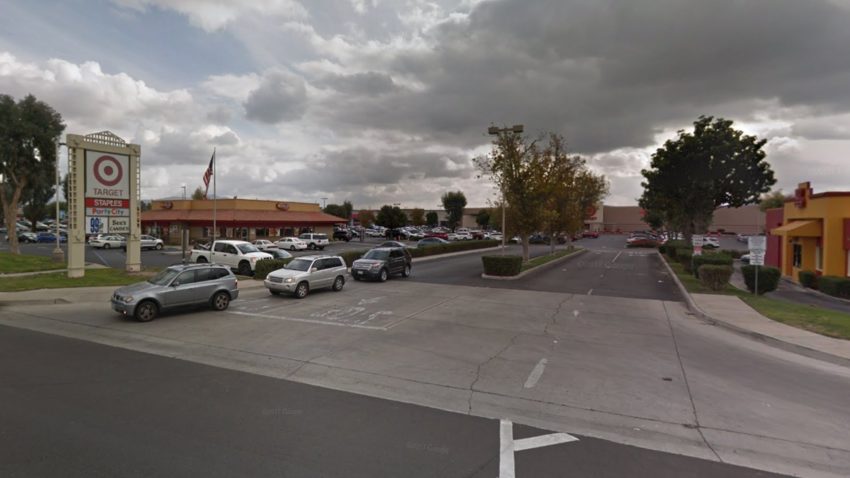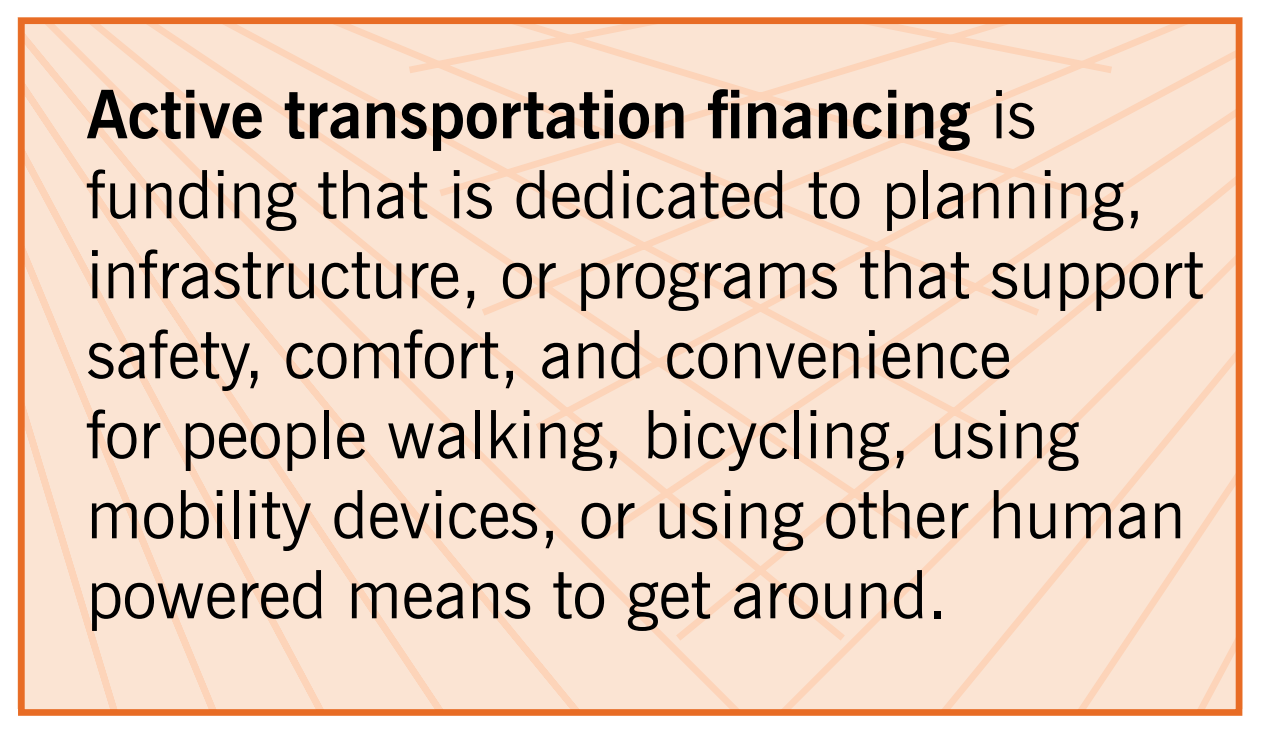
Share On Social!
Access to walking, bicycling, and other forms of active transportation can benefit Latino and all people’s health, safety, social connectivity, and quality of life.
But many communities struggle to pay for sidewalks, bike lanes, and trails.
Fortunately, a new report from Safe Routes to School National Partnership explains “active transportation financing” and how it can set the stage for strong health partnerships that can generate healthy, active, equitable communities
Active Transportation Matters
There is a connection between public health and transportation.
People are healthier when they have safe places to walk and bike.
However, disparities exist.

Low-income populations and Latino and other communities of color have fewer safe places to walk and higher rates of chronic disease, according to a research review by Salud America! at UT Health San Antonio.
These communities also face higher injury and fatality rates.
Latinos make up 16.9% of the population, but 21.5% of pedestrian deaths, according to Dangerous by Design 2016.
Nationwide, communities spend seven times more money on medical costs from walking and biking injuries and deaths than on construction of sidewalks, crosswalks, and bike lanes to keep people safe.
Texans, for example, pay between $38 and $162 billion annually for traffic crashes, according to Vision Zero Texas.
Walking and biking ease traffic congestion and car use, reducing air pollution and decreasing the need for costly road construction and maintenance.
“If half of short trips in the summer months in Midwestern cities were taken by bike instead of car, the benefits of better air quality and higher levels of physical activity would be approximately $8 billion per year, based upon estimated savings from averted mortality and reduced health care costs,” authors state.
Active transportation investments more than pay for themselves in health care and fuel savings. This makes it critical to ensure funding goes to communities with the greatest health and safety needs.
So how do local and regional governments equitably fund active transportation?
Active Transportation Financing
In January 2019, The Safe Routes to School National Partnership released Investing in Health: Robust Local Active Transportation Financing for Healthy Communities.
The report addresses:
- What active transportation is;
- The need for and benefits of increased active transportation financing;
- What active transportation financing is;
- How transportation funding works;
- Different approaches that local governments have taken to funding active transportation;
- Considerations regarding policy goals and campaign directions; and
- Diverse stakeholders with the capacity to strengthen strategy development and implementation.
 For example, a local government can assess an “impact fee” on new development projects to pay for the cost to the government for providing the facilities and public services for the development’s users.
For example, a local government can assess an “impact fee” on new development projects to pay for the cost to the government for providing the facilities and public services for the development’s users.
San Francisco approved an impact fee in 2015 to benefit active transportation.
“The Transportation Sustainability Fee is projected to raise $1.2 billion for transportation improvements over 30 years, with most of the money going to transit, but a meaningful amount going to improved bicycle and pedestrian infrastructure,” according to the report. “The new fee represents the first time that San Francisco’s impact fees include bicycle and pedestrian improvements.”
The report also includes a one-pager on the basics of active transportation financing. It also has a two-pager on how local governments generate active transportation funding.
Join a free active transportation financing webinar on January 31 to hear from speakers from BikeWalkKC of Kansas City, Missouri, and Investing in Place, Los Angeles, who will share lessons from their exciting and inspiring local active transportation financing success stories.
Share with Health Professionals
Health professionals, including doctors, nurses, and public health professionals, are one of the most trusted groups of messengers on public policy issues such as this.
Health professionals can persuade the public of the value of active transportation financing as spokes-people on the issue, through writing op-eds or letters to the editor, or through other outreach opportunities.
Health stakeholders can help transportation practitioners understand that health disparities are often correlated with restricted opportunities for safe walking and bicycling.
Health stakeholders can use data to advocate convincingly for the need for strong, equity-focused transportation policies.
Share this report with health professionals and others to help them understand why we need robust active transportation financing, how the evidence shows benefits of biking and walking, and how we can use funding to create healthy, active communities.
Explore More:
Healthy Families & SchoolsBy The Numbers
142
Percent
Expected rise in Latino cancer cases in coming years



